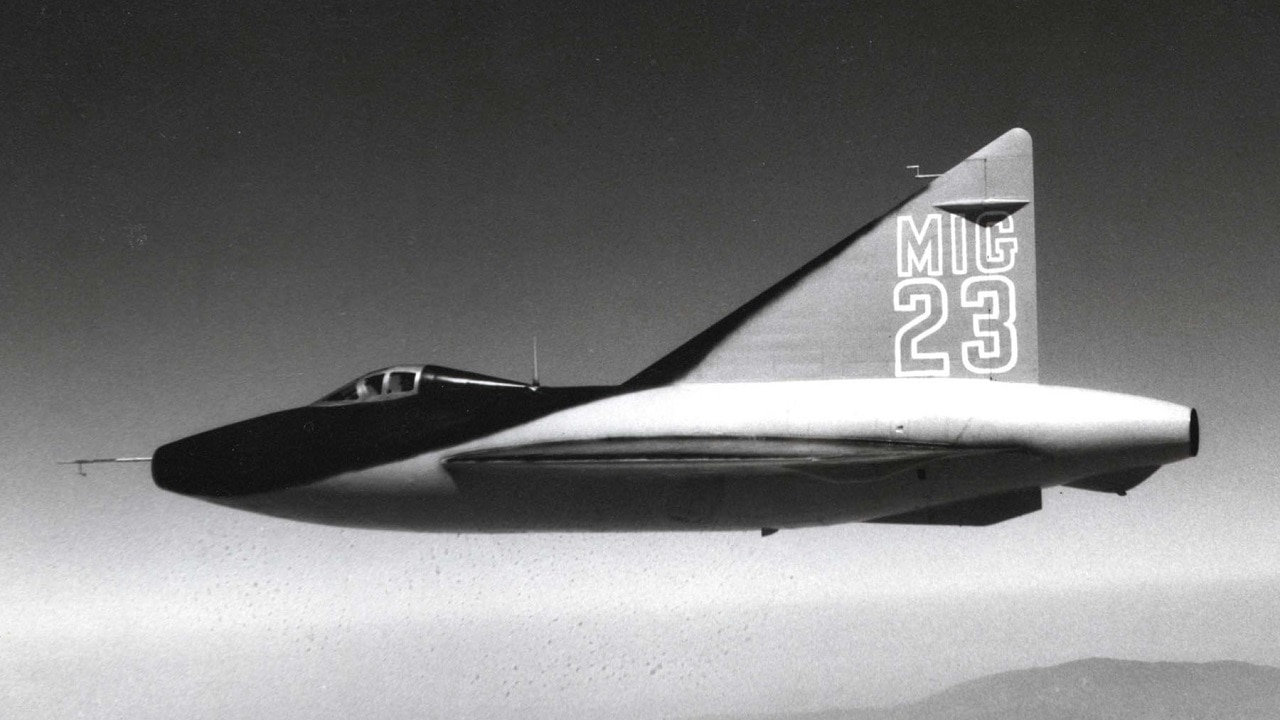The U.S. Air Force always found a way during the Cold War to make sure they could take on the old Soviet Union in a war. And that meant finding a way to get MiG fighters and train to beat them. A former U.S. Air Force member gives us his take of the Red Eagles: During the 1980s, the U.S. Air Force operated a top-secret squadron, the 4477th Test and Evaluation Squadron (4477 TES). The 4477th, which operated out of the isolated Tonopah Test Range Airport in Nevada, had one, simple purpose: to train U.S. pilots to handle enemy aircraft, namely Soviet MiGs. Nicknamed the “Red Eagles,” the 4477th instructed USAF, U.S. Navy, and U.S. Marine Corps pilots in the combat tactics necessary to defeat Soviet jets.
Red Eagles in the Skies
The Red Eagles operated as a tool of the U.S. government’s Foreign Aircraft Technology program. And while the Red Eagles’ existence has been declassified, foreign aircraft technology evaluation likely continues to this day. In addition to evaluation of foreign tech, the Red Eagle squadron is credited with revitalizing the art of dogfighting, and with inspiring the founding of the Air Force’s Red Flag program and the Navy’s Strike Fighter Tactics Instructor Program (SFTI Program), commonly referred to as TOPGUN school – both of which are still active today.
Flying With the Enemy (Aircraft)
Operating a squadron of enemy aircraft required, naturally, the acquisition of enemy aircraft – not always an easy task. Israel loaned the Red Eagles their first Soviet jets – two MiG-17Fs and a MiG-21, that had been captured from the Syrian and Iraqi forces. The USAF came into a dozen or so more MiGs by way of Indonesia. The Indonesians had received a variety of MiGs from Korea, Pakistan, and Cambodia. The Americans, in need of an aggressor squadron worth of MiG aircraft, offered the Indonesians the new, sleek Northrop F-5 Tiger II in exchange. Indonesia accepted.
The U.S. was diligent in its search for MiGs. Some MiGs were rescued from scrap yards, others were dug out of their remote crash sites. Some were found abandoned in warehouses. The CIA helped. In the late 70s, as the Soviets unveiled updated MiGs, like the 21 and 23-models, the U.S. courted Egypt and Somalia as potential suppliers.
As Egypt-Soviet relations soured in the 70s, Egypt looked westward for support, finding it in America. Allegedly, Egyptian President Anwar Sadat sold a dozen MiG-23s to the U.S. in exchange for three dozen F-4 Phantoms – a nice haul for Sadat. The U.S. would also acquire various MiGs from East Germany. And in 1987, the USAF purchased a dozen brand new Shenyang F-7Bs, which were China’s license-built version of the MiG-21.
To pilot the hard-earned MiG aircraft, accomplished pilots were selected. Typically, the USAF chose graduates of the Air Force Test Pilot School at Edwards AFB or graduates of the Naval Test Pilot School at NAS Patuxent River. TOPGUN instructors were also chosen. Generally speaking, the 4477th pilots were the best – which makes sense given the elaborate measures taken to procure the squadron’s aircraft.
Maintaining the Red Eagles’ fleet of MiGs was a sprawling challenge. Keeping MiGs airworthy – as they are not known for their durability – can be difficult under any circumstances. Keeping MiGs that had been rescued from scrap yards or crash sites airworthy required talent and grit. Maintainers had no instruction manuals and no technical data. And of course, spare parts were not readily available. When a part broke, the 4477th relied on the CIA, or a U.S. manufacturer, to find or create a replacement.
Given the value and vulnerability of the aircraft, special precautions were taken to preserve the top-secret Soviet jets – they were never flown at night; they were never flown in bad weather.
When the Cold War ended, the cost of maintaining and operating an entire MiG squadron began to feel unjustified. The Red Eagles shuttered in 1988, before officially disbanding in 1990. What happened to all the 4477th’s MiGs is not entirely clear. Some were donated to museums, but the fate of others is still classified. Rumors hold that a few were buried in the Nevada desert.
Harrison Kass is a Senior Defense Editor at 19FortyFive. An attorney, pilot, guitarist, and minor pro hockey player, he joined the US Air Force as a Pilot Trainee but was medically discharged. Harrison has degrees from Lake Forest College, the University of Oregon, and New York University. He lives in Oregon and regularly listens to Dokken.

